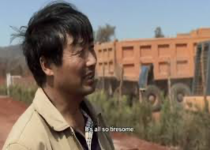Copied from Hunt Talk member who broke it down way better than i could :
Not sure if this has been discussed elsewhere. I can see both sides of this. https://billingsgazette.com/news/state-and-regional/bill-awards-large-nonresident-landowners-with-big-game-combination-hunting-licenses/article_c422b588-b478-11ed-af53-b31f2da5c768.html

www.hunttalk.com
post#15
Here's a link to the bill:
http://laws.leg.mt.gov/legprd/LAW02...P_ENTY_ID_SEQ2=&P_SBJT_SBJ_CD=&P_ENTY_ID_SEQ=
When this first came forward, my initial reaction was "hell no." Now, I support it.
Here's why: MT resident hunter numbers are declining while NR's are increasing. With this switch, and longer seasons, we are seeing resident hunter success (success against all license holders really) go down as season length and intensity of hunters increases. This bill would move up to 15% (same as any other landowner preference program) into the preference pool for NR landowners with at least 2500 acres of fee title land. That means up to 2550 fewer licenses for outfitters and DIY NR hunters. On average, those NR hunters are spending about 10-14 days hunting for each license. By moving those licenses into private land only category (only to be held by the family members) this could potentially see between 25500 and 35700 fewer hunter days on public land and publicly accessible lands while applying pressure on lightly pressured private lands. That benefits the wildlife resource and the resident hunter
This kind of re-allocation also does not impact FWP's revenue stream as these are still full price. There is also an access carrot in the bill where a landowner could purchase an extra bonus point for permit areas if they enroll in a state sponsored access program.
The 15% matches other Landowner preference programs in statute, although those apply for LE permits. This program does not take anything from the permit system in terms of allocating it to those preference pool. It also does not add any permits or licenses to the 17,000 cap.
Furthermore, when you look at this piece in the entire elk consensus package, it looks like this:
1.) SB 58: Double the cap on Block Management to $50K with rule changes coming to increase the hunter day use formula.
2.) SB 281: Reduce the number of B8 licenses available for OTC purchase: This could cut as much as 3000 B licenses, and another 12K hunter days.
3.) HB 635: 2550 B10's going to the NRLO preference pool
4.) HB 361: Hunter Harassment/Hunting w/o landowner preference (amendments for this bill are posted)
5.) HB 243: Mandatory in person field day for Hunters Ed
6.) HB 596: Tightening the law around the 454 program to put a heavier focus on wildlife management
7.) HB2: New fte for data gathering for the Hunt Planner to include DNRC road system, access easements & other data that can then be scraped by GoHunt, OnX, etc for better apps.
I understand and respect the opposition, but the 454 program is the easiest to corrupt statutorily for ranching for wildlife, and bartering tags for access is how the CO, NM and NV systems started and then were taken over by privatized interests. MT's landowner preference system simply provides licenses/permits for landowners as a benefit of providing habitat. While there are some who abuse this program, it has been well run in the past and there is a side group that is likely to be taking this issue up in the interim for further reforms to the LO Preference program in 2025.
Like it or not, NR landowners have always been in the west. The Scots and English ran the range from the 1860's until the early 1900's. Hell, even Evelyn Cameron, the heroine photographer of eastern MT was an English upper crust member who came out west. TR was a large NR landowner as well. The ranches are providing conservation uplift in that they are being maintained as large, intact landscapes rather than being chopped up for 20 acre horse ghettos or new subdivisions for 5 acre ranchettes. This approach is about helping those NR landowners become a bigger part of their rural communities while extending a courtesy license for their stewardship. It's not that much different than the current LO preference program that all - Residents and NR's are using today.
Also, by segregating these landowners out, it improves the odds for resident landowners to improve the success in drawing their LO preference, further (albeit in a very small way) reducing more pressure on public land.
As to why MOGA supports the bill - their board and leadership are seeing the same thing we all are: increased use of private land due to public hunting pressure, decreased success rates and bad outcomes for people and critters. To their credit, this takes a hit out of their potential client base, but they're supporting this as a part of the whole package.


